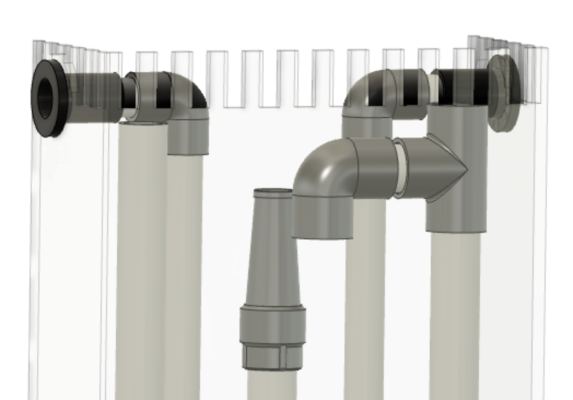I am new to reefing and am having a custom 120 gallon / 48" x 24" x 24" acrylic tank built. It will have a built-in overflow and I'd like to get some additional eyes on my proposed design to make sure it will work properly.
The overflow will be 12" x 5" and will have a Bean Animal overflow with 3 x 1" pipes and two 3/4" returns that exit through the sides at the top.



Does that look like that will be a workable, quiet design? I may just have the return Line-Loc route through the overflow side instead of having bulkheads on each side. The slots as modeled are 1/2" wide. Is that a decent size to allow flow but prevent animals from getting into the overflow? Do folks use any kind of screening to provide additional protection? Is there an accepted vertical distance between each of the primary, secondary and emergency overflow openings?
Additionally, I have ~5" between the overflow sides and the sides of the aquarium. With the overflow extending 5" into the tank, is it reasonable to have a VorTech MP40mQD powerhead on each side? From what I can find, the wet side of that powerhead has a 3" diameter and extends into the tank 3".

The overflow will be 12" x 5" and will have a Bean Animal overflow with 3 x 1" pipes and two 3/4" returns that exit through the sides at the top.
Does that look like that will be a workable, quiet design? I may just have the return Line-Loc route through the overflow side instead of having bulkheads on each side. The slots as modeled are 1/2" wide. Is that a decent size to allow flow but prevent animals from getting into the overflow? Do folks use any kind of screening to provide additional protection? Is there an accepted vertical distance between each of the primary, secondary and emergency overflow openings?
Additionally, I have ~5" between the overflow sides and the sides of the aquarium. With the overflow extending 5" into the tank, is it reasonable to have a VorTech MP40mQD powerhead on each side? From what I can find, the wet side of that powerhead has a 3" diameter and extends into the tank 3".



















